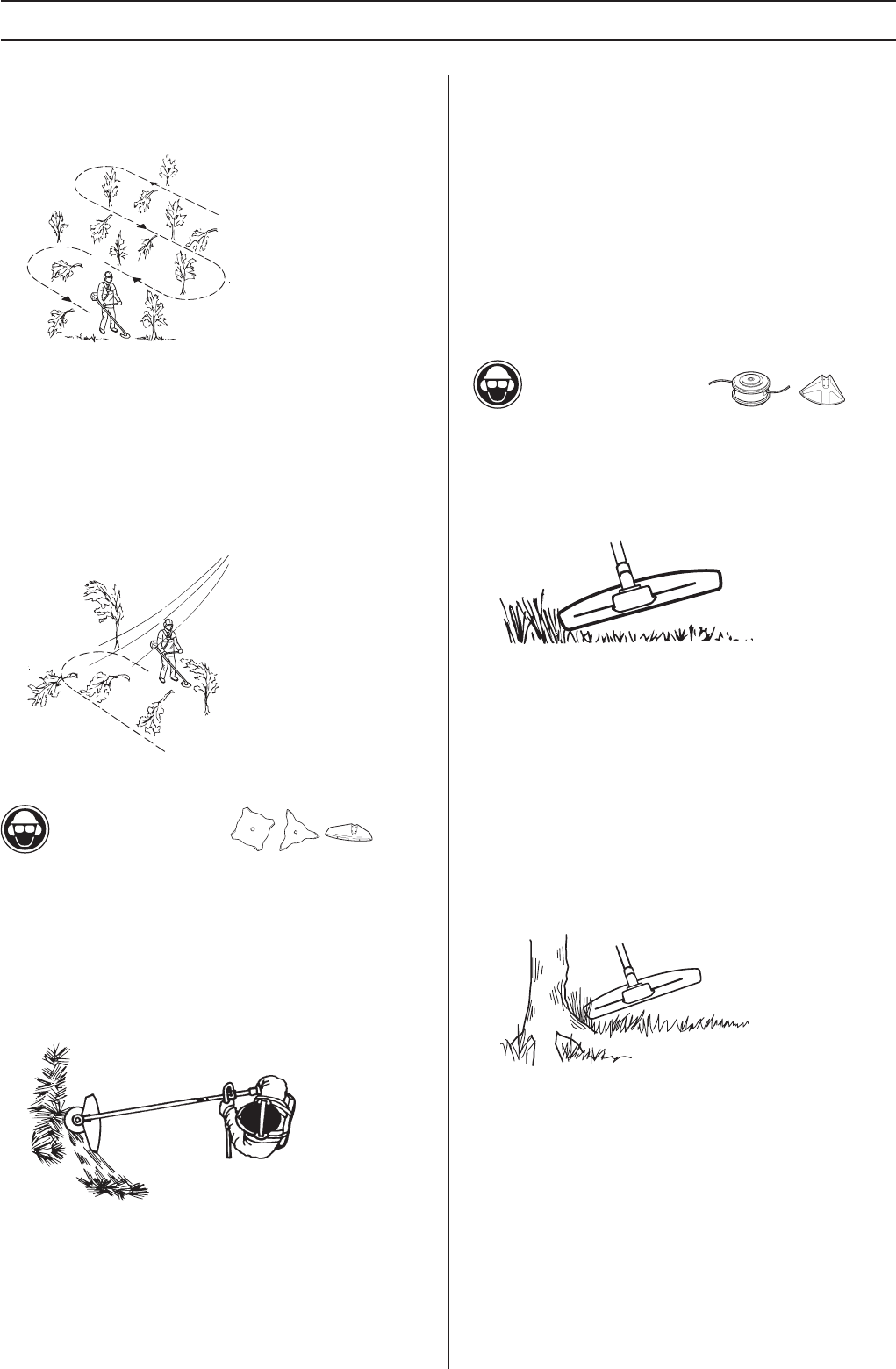
English – 19
WORKING TECHNIQUES
• Work systematically to and fro across the area, clearing a
width of around 4-5 m on each pass. This exploits the full
reach of the machine in both directions and gives the
operator a convenient and varied working area to work in.
• Clear a strip around 75 m long. Move your fuel can as
work progresses.
• On sloping ground you should work along the slope. It is
much easier to work along a slope than it is to work up and
down it.
• You should plan the strip so that you avoid going over
ditches or other obstacles on the ground. You should also
orient the strip to take advantage of wind conditions, so
that cleared stems fall in the cleared area of the stand.
Grass clearing using a grass blade
• Grass blades and grass cutters must not be used on
woody stems.
• A grass blade is used for all types of tall or coarse grass.
• The grass is cut down with a sideways, swinging
movement, where the movement from right-to-left is the
clearing stroke and the movement from left-to-right is the
return stroke. Let the left-hand side of the blade (between
8 and 12 o’clock) do the cutting.
• If the blade is angled to the left when clearing grass, the
grass will collect in a line, which makes it easier to collect,
e.g. by raking.
• Try to work rhythmically. Stand firmly with your feet apart.
Move forward after the return stroke and stand firmly
again.
• Let the support cup rest lightly against the ground. It is
used to protect the blade from hitting the ground.
• Reduce the risk of material wrapping around the blade by
following these instructions:
1 Always work at full throttle.
2 Avoid the previously cut material during the return
stroke.
• Stop the engine, unclip the harness and place the
machine on the ground before you start to collect the cut
material.
Grass trimming with a trimmer head
Trimming
• Hold the trimmer head just above the ground at an angle.
It is the end of the cord that does the work. Let the cord
work at its own pace. Never press the cord into the area
to be cut.
• The cord can easily remove grass and weeds up against
walls, fences, trees and borders, however it can also
damage sensitive bark on trees and bushes, and damage
fence posts.
• Reduce the risk of damaging plants by shortening the
cord to 10-12 cm and reducing the engine speed.
Clearing
• The clearing technique removes all unwanted vegetation.
Keep the trimmer head just above the ground and tilt it. Let
the end of the cord strike the ground around trees, posts,
statues and the like. CAUTION! This technique increases
the wear on the cord.
• The cord wears quicker and must be fed forward more
often when working against stones, brick, concrete, metal
fences, etc., than when coming into contact with trees and
wooden fences.
• When trimming and clearing you should use less than full
throttle so that the cord lasts longer and to reduce the
wear on the trimmer head.


















